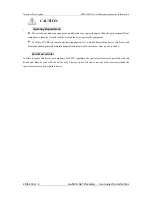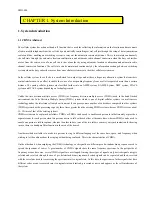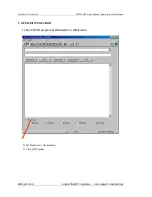
EMII-800
1. System Introduction
1.1 CDMA Abstract
The cellular system has a channel hand-off function that is used for collecting the information on the locations and movements
of radio mobile telephones from the cell site by automatically controlling several cell site through the setup of data transmission
routes and thus, enabling one switching system to carry out the automatic remote adjustment. This is to maintain continuously
the call state through the automatic location confirmation and automatic radio channel conversion when the busy subscriber
moves from the service area of one cell site to that of another by using automatic location confirmation and automatic radio
channel conversion functions. The call state can be maintained continuously by the information exchange between switching
systems when the busy subscriber moves from one cellular system area to the other cellular system area.
In the cellular system, the cell site is a small-sized low output type and utilizes a frequency allocation system that considers
mutual interference, in an effort to enable the re-use of corresponding frequency from a cell site separated more than a certain
distance. The analog cellular systems are classified further into an AMPS system, E-AMPS System, NMT system, ETACS
system, and JTACS system depending on technologies used.
Unlike the time division multiple access (TDMA) or frequency division multiple access (FDMA) used in the band limited
environment, the Code Division Multiple Access(CDMA) system which is one of digital cellular systems is a multi-access
technology under the interference limited environment. It can process more number of subscribers compared to other systems
(TDMA system has the processing capacity three times greater than the existing FDMA system whereas CDMA system, about
12~15 times of that of the existing system).
CDMA system can be explained as follows: TDMA or SDMA can be used to enable each person to talk alternately or provide a
separate room for each person when two persons desire to talk with each other at the same time, whereas FDMA can be used to
enable one person to talk in soprano, whereas the other in bass (one of the two talkers can carry out synchronization for hearing
in case there is a bandpass filter function in the area of the hearer).
Another method available is to make two persons to sing in different languages at the same time, space, and frequency when
wishing to let the audience hear the singing without being confused. This is the characteristics of CDMA.
On the other hand, when employing the CDMA technology, each signal has a different pseudo-random binary sequence used to
spread the spectrum of carrier. A great number of CDMA signals share the same frequency spectrum. In the perspective of
frequency area or time area, several CDMA signals are overlapped. Among these types of signals, only desired signal energy is
selected and received through the use of pre-determined binary sequence; desired signals can be separated and then, received
with the correlator used for recovering the spectrum into its original state. At this time, the spectrums of other signals that have
different codes are not recovered into its original state and instead, processed as noise and appears as the self-interference of
the system.
CHAPTER 1. System Introduction






































